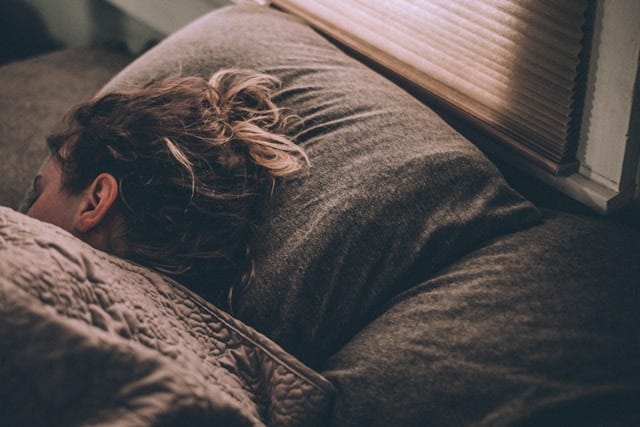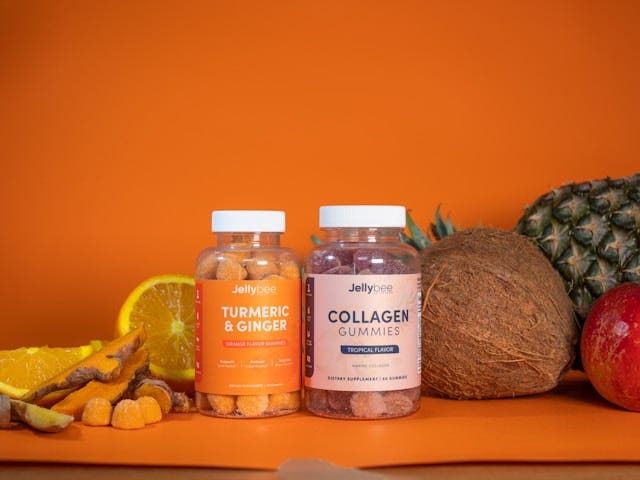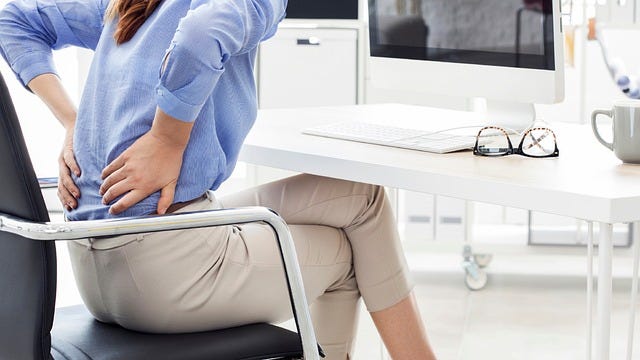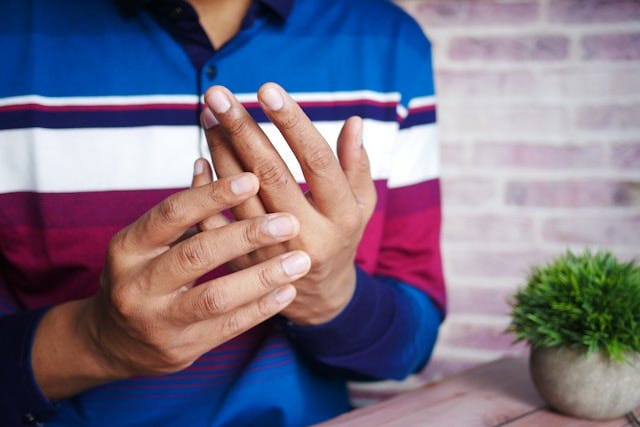#1 Q&A Series: Intro & General Health
New series! You ask, I answer. Today we talk about the most common general health concerns: on insomnia, back pain, tendinitis, supplements and depression meds withdrawal.
Welcome to The Feel Good Life! A newsletter about health, prevention, empathy, and hope. I’m Dr. Mariana Calleja M.D. and I’m here to teach you how to prevent illness and feel good in your body. Get started by checking my easy, medically-guided course on managing stress and daily habits, right here.
Hello and welcome everyone!
Our Feel Good family keeps growing and I’m thrilled to have you all here saying YES to yourself and choosing to feel good. You’re indeed in the right place.
Some fresh news for you today:
I’m starting a new series!
Since the beginning of this newsletter back in September 2023 I’ve received so many comments, questions and feedback regarding all the health topics we’ve covered so far throughout our first course - which is on stress management and healthy habits - to help you boost your metabolism and change your health. In it, so many of you have learned already about sleep, hydration, insomnia, emotional health, exercise, hormones, just to mention the most relevant ones. All this has given you a lot to think about, which has created interesting conversations around our feel good community.
It has also made me realise how valuable it would be to put all these health concerns (anonymously of course) into a regular newsletter for everyone to benefit from. Since your health questions keep coming (kudos to you for wanting to improve your health!), I can keep growing a nicely curated list of the most common health concerns and advice for you, as another way to create more and more prevention as we go.
This is why I am creating the Feel Good Q&A Series.
Each month, I will gather every health question and concerns from my Feel Good network and share them anonymously here on Substack as a Q&A post. These will be titled with #1, #2, #3, etc. along with the main topics included to make it easier for everyone to find and follow up. Each Q&A newsletter will include between five and ten questions, all answered in the most curated way to the best of my knowledge for you all.
My intention with this is to create a great source of health information for everyone to learn from, and to help clear the most common doubts asked in healthcare. This way we are paving the way towards prevention, one newsletter at a time.
Now, without further ado, let’s start off our very first Q&A Feel Good Series!
#1 Q&A Feel Good Series: Intro & General Health
You ask, I answer! Your most common health questions, doubts and concerns, answered by yours truly, Dr. Mariana M.D.
Let’s go!
Q1. I can’t fall asleep easily. How can I improve this?
Well, sleep is in fact one of the most important assets of health.
When we sleep, our body does many important functions to help it recover and prepare for the next day. Functions such as regeneration, cleansing and detoxing, just to mention a few. So yes, sleep is vital and so is your concern. Let’s go deeper.
When there’s a lack of sleep or sleep debt, it’s common for both mind and body to experience changes such as mood swings, lowered focus and productivity, food cravings, headaches and even digestive issues.
When sleep is out of whack, certain hormones can become slightly imbalanced, particularly Cortisol - the very well-known stress hormone. It’s one of the most important hormones in the body in charge of way too many vital biological processes. So it’s only natural that when hormones like Cortisol are affected in the body, consequences appear:
The stress hormone cortisol is produced by the HPA axis, which also helps coordinate your sleep cycles. When the HPA axis is disrupted through poor nutrition, chronic stress, or illness, this can result in insomnia and other sleep disturbances. (How does cortisol affect your sleep? - Healthline)
In the medical and wellbeing field, there’s what we call Sleep Hygiene. This is a term used to describe good sleep habits that include important things such as environment, behaviour and stress levels. When trying to improve sleep, first you need to learn what’s the root cause affecting your sleep. It could be anxiety, work-related stress, digestive issues or simply unhealthy routines like scrolling in bed.
Through a good sleep hygiene routine, you can help your mind and body relax and prepare to disconnect. Here are some quick and useful tips that can help in your bedtime preparation process:
Avoid screens 1 hour before sleep time. The screen’s blue light stimulates neuronal activity in the brain, interfering with the Melatonin release cycle in charge of activating the sleep process. When the light receptors in your eyes keep getting light stimuli, the sleep-preparation signal never comes, hence why in most cases, people stay wide awake when scrolling in bed. And considering that it takes at least one hour for the brain to unwind, no wonder people are not able to fall asleep as soon as they put the phone down.
Avoid caffeine and other stimulants after 3pm in the afternoon. Again, stimulants to the nervous system block the sleep-preparation signal. Many people seem unaffected by these, but it’s important to observe and note what works and doesn’t work for your organism.
Scents that stimulate sleep: candle scents such as vanilla, lavender or chocolate have proven to relax the nervous system. You can light the candle for 30 minutes prior to bedtime as a way to let the scent fill your room. When you go to bed, your brain will sense it and start relaxing to it. Eventually it becomes a routine and your brain will know that X scent = sleep time.
Room temperature is also important. Not too warm, not too cold. A bit of natural air flow is always helpful (if weather conditions allow) to help your oxygenation as you fall asleep. When we sleep, the body’s temperature adjusts and lowers considerably. This happens as an energy-saver mechanism while your body is doing other jobs overnight. The same goes for light. A darker room will help your nervous system to deactivate when it stops getting the light input which activates the Cortisol axis, giving the wrong message to your brain.
Use comfy clothing. It can be common for many people to feel cold in their feet, hands or head overnight, while others tend to feel warm, requiring a better air flow and lighter clothing. It’s all valid, each organism is different and your needs are unique. Make sure you experiment with this, observe yourself and find out what your ideal room and body temperature for sleep is.
White sounds. It has been proven that white noise work like a brain massage, inducing both relaxation and sleep. Because it is said to have all frequencies in the audible spectrum, it helps mask disruptive sounds and improve sleep. You can find plenty of these noises in Youtube or Spotify playlists, lasting hours to help you fall and stay asleep nicely.
You can start by choosing two of these in the list and start including them in your night time routine. After a few days or two weeks, you’ll be astounded at the results in your sleep pattern.
SPECIAL TIP: Here’s my Top 3 Sleep Habit-Making - as explained in lesson 7 of my Don’t Stress It course.
Q2. I want to start taking some supplements. Do you recommend it?
Supplements have become a popular form of natural medicine and they can be indeed a good wellbeing aid at times. It’s called Naturopathy and it is a form of healthcare that combines modern treatment with traditional methods, which includes alternative, natural therapies to modern medicine.
However, it’s important to note that not all supplements are good for everyone. Let’s note that because something is natural, it doesn’t mean it won’t cause any reactions or interactions. Many well known natural herbs can cause interactions with certain medications like anticoagulants or blood thinners. So if you have any underlying medical condition or you take medications, you must always consult with your doctor regarding supplements. It’s true that most traditional doctors might not be as knowledgable in these topics, but thankfully, more and more healthcare professionals are starting to understand the importance of combined medicine styles towards a more integrative health approach.
It’s important to be clear on a few things beforehand:
Reasons why you feel the need or curiosity to supplement yourself.
Underlying medical conditions or regular medication that you might be taking.
Known allergies or reactions, whether pharmacological, dietary or environment-related.
Now, as for the most commonly recommended supplements by healthcare professionals, you’ll find diverse ones such as different forms of Magnesium, Vitamin D, Zinc or B-Complex. These are commonly used to enhance vital cellular processes and reinforce the immune system. But again, they’re not for everyone or anytime.
Most supplements are recommended to be taken after a proper blood checkup and for periods no longer than 3 months, always with a 1-month rest in between if longer periods of use are needed.
So, supplements can be your friend, but don’t take them only based on what you’ve heard through the grapevine. Be responsible about your health by getting to know your body well in the first place, by researching properly what you want to feed it, and by consulting with your preferred healthcare professional to guide you in the process.
Q3. I work from home, my back pain has gotten worse and I can’t seem to shake it off. Help!
Well, welcome to the most relatable post-pandemic health issue worldwide!
This has been one of the common health problems in the history of medicine, but it has definitely increased since pandemic times.
It’s clear that the most impending need when working from home (WFH) comes down to having proper equipment to ensure the right postures while at work. In most cases, WFH equals long hours of sitting down in front of a screen. The health issues that can be easily listed are as common as tired sight, lower back pain, neck pain, headaches, hand/arm tendinitis, and even sciatica.
Thankfully, there are simple tricks to help you check and assess your work station so that these health issues can be either improved or prevented.
There’s a branch of medicine called Occupational Medicine (OM), which is in charge of checking, attending and preventing work-related health injuries, illness and hazards. In many companies worldwide, there’s an Occupational Medicine department. In case you work for a company, you can ask your HR department to check if there’s an OM service to help you. If you’re self employed and can’t access an OM service, don’t worry! There’s plenty of information to help you check and enhance your own work unit at home.
Three quick, simple tricks to prevent work-from-home health issues:
Every foldable joint in your body should be at 90 degrees.
For example: your screen should be elevated enough to make a 90 degree angle in your neck. This means that your neck shouldn’t be too tilted up or down for your eyes to read the screen. Every angle equals X pounds of pressure upon your neck. Imagine holding 5 bricks on your neck all day? That’s the amount of effort your muscles are making when you read the screen in the wrong position.
Here’s an excellent ergonomics guide for you to use at home.
Regular Mouse vs Ergonomic Mouse
Regular hand mouses can cause tendinitis either in your thumb area or on one side of your arm. This mouse position isn’t the best one for your arm from an anatomical point of view - I’ll explain why in Q#4. The ergonomic mouses are built differently to adapt to the correct anatomical posture of your hand and wrist, and in most cases they heal/prevent cases of mild tendinitis caused by long-term hand-mouse usage.
Stand up and move every hour
Sitting for long hours can be quite damaging for your blood circulation and your musculoskeletal system. By staying in the same position for more than an hour for hours in a row will make your joints stiff, your muscles weak and your lower body’s pipe system (a.k.a arteries, veins and lymphatic pathways) slow.
All this can easily give you symptoms such as back pain, sciatica, feet swelling and fluid retention. It’s vital to move your body in order to avoid these preventable ailments. I’m always amazed during consultations at how many hours people can sit without moving a centimeter - not even to drink a sip of water. It’s not only damaging for the body but for the brain too. Your sense of focus and productivity might seem great when you don’t move, but the truth is that the brain’s ability to stay focused for hours in a row is very limited. Some pauses to breath deeply allows your blood to circulate and take oxygen properly to your brain.
A simple trick to start creating this habit is setting an alarm on your phone to remind you to move every hour for 2-5 minutes. Or paste a post-it note on your laptop’s corner as a reminder to stand up every hour, breathe deeply and walk briefly.
4. I have been feeling a stinging pain and stiffness in my hand for a while. Apparently, it’s mild tendinitis. What do you recommend to help it get better?
Tendinitis it’s quite a common health concern and I’m glad you asked.
Tendinitis is an inflammation of tendons, which are structures related to muscles and the entire skeletal system. Mild tendinitis can happen due to bad hand or arm postures, quite common among those working in front of screens for long hours, or practicing certain sports or disciplines requiring a larger upper limb effort such as tennis, gymnastics or weight lifting.
This image below shows what a mild difference in posture each mouse gives to the hand, resulting in forced postures and mild repetitive or long-term inflammations.
Here’s a comprehensive guide explaining this phenomenon quite easily, with practical images (see below) and useful numbers for you to understand why tendinitis is so common and how easily preventable it can be.
When it comes to bad hand postures related to desk and screen work, it’s common to use the average mouse that we all know. However, anatomically speaking, the hand’s right posture is different from it, as shown in the image above. There are ergonomic mouses which allow your hand to do the same functions except from an anatomically correct position, helping alleviate and prevent such cases of hand tendinitis. You can easily get these through Amazon and tech shops. You can also ask if your company offers them as part of their occupational medicine service, if any.
5. I’ve been battling with depression and anxiety for a long time. Soon I’ll be coming off the pills as guided by my doctor, and I feel a bit concerned about falling into low mood states again. What can I do to prevent this?
When going through periods of depression, anxiety and altered mood states, it’s important to know above all that this happens to us all. Seeking professional help, as difficult as it may feel at times, it’s always advisable.
Not everyone who goes through these episodes will require medication, but when it is the case, it’s vital to stick with your doctor’s guidance as needed.
Now, when the time comes to come off antidepressant or anti-anxiety treatments, it’s important to know that it will be a de-escalating process. These treatments are never cancelled in one go, mostly because they can create what we call a withdrawal fatigue. Your doctor will likely explain to you the process of coming off such treatments, along with advice to help you cope in the process.
This is a big step! And the fact that it’s happening, means that you’re committed to yourself, looking to feel better and to come back to your sense of self and life. I applaud you! No easy task, yet a very rewarding one.
Now, how to cope with medication withdrawal processes?
Most importantly: routine. It’s vital that you can find, keep or renew your routine so that your brain doesn’t feel too overwhelmed with basic daily habits and chores. It will already be a bit overwhelming to start embracing this new feeling sans meds, so that’s why it so important to make sure your daily habits remain healthy and strong to keep you afloat and going in the process.
Exercise or any physical movement will help you immensely. Muscles have an intimate connection with the body’s hormone system. When you move, your hormones along with other biochemical process are enhanced and activated. This will allow your metabolism to adapt nicely as all withdrawal biological processes are taking place. Plus, being out in the sunshine, whether it’s the garden, the road or the gym, will also activate important cell processes starting in the skin thanks to the effect of natural sunlight. You can read more about it here.
Meal schedules are also vital. The nutrients and hydration you receive through your diet will impact directly all this cellular work in your body. Remember that everything in the human body is a chemical reaction, and food is truly our medicine when done properly. Just like sleep balances out organic processes at night, so does food and movement during the day.
Journal your feelings. During medication removal, there will be a large rainbow of feelings, some that will make sense and some that won’t. It’s important NOT to judge yourself. Being on meds and coming off them is a huge work for the mind and the body. You’ve been through a lot, so compassion is the way. Whenever emotions come in this process, it’s always useful to journal and express it all. Making it a part of your routine, whether mornings or nights, will be a mostly beneficial exercise in your recovery process. Emotions are messengers and we should always let them out and be. Like the saying goes: “The body screams what the mind keeps silent.”
Prioritise sleep. Is quite likely that in the withdrawal process you’ll feel more tired than usual, hungrier or thirsty. Allow yourself to rest as much as you need, but make sure that you don’t spend your time in bed all day. Your body needs light, movement, fresh air and good food to balance itself out every day.
Start slowly but make steady improvements daily and you’ll be feeling great in no time!
Well, this has been a really good Q&A starter!
I hope it’s been helpful and insightful. I’d love to have your feedback in the comment section as a way to know how useful this has been, as I start building this new series. Your input helps me improve this newsletter, so thank you in advance! See you in the comments.
Have a great day and until next time!
Hugs,
Dr. Mariana
Photo Credits:
Q1. Photo by Gregory Pappas on Unsplash
Q2. Photo by Jellybee on Unsplash
Q3. Photo by Kevin on Pixabay
Q4. Photo by Towfiqu barbhuiya on Unsplash
Q5. Photo by Anthony Tran on Unsplash













Another excellent - and VERY useful - post, Dr. Mariana. Didn’t know about that mouse! Going to check that out immediately. Keep up the great work.
Love this, Doc! 🤓💛